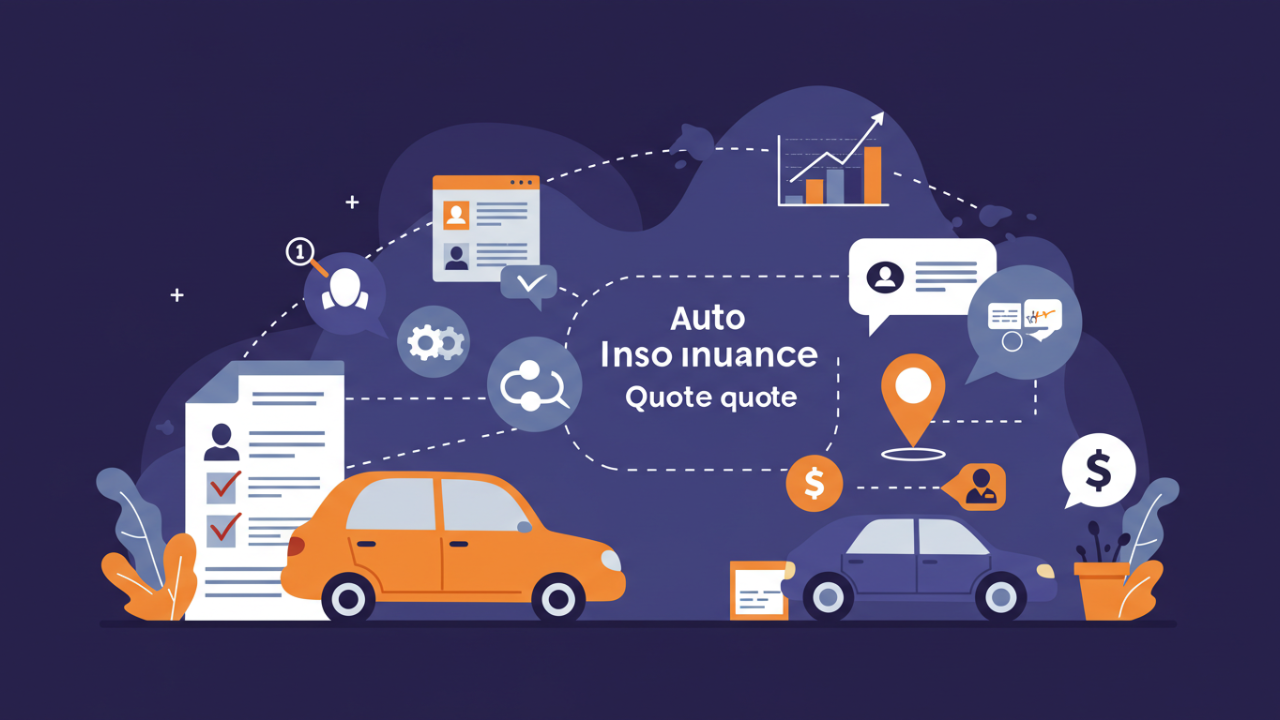Car Insurance Quotes give you an estimate of what you might pay for auto coverage. A quote is not the final premium, which can change based on underwriting review of risk factors including credit history.
Understand how different policy choices, deductibles and limits affect your quote so you can make smart decisions to optimize costs without sacrificing coverage.
Coverage
Car insurance quotes are an estimate of the cost of a policy based on a limited amount of personal information. These quotes typically include the cost and limits of coverages, as well as any add-ons that may be available, such as roadside assistance or rental reimbursement. They can be obtained from brokers, agents, or insurers. The quotes will differ by company, because each insurer uses a different formula to determine risk and price a premium. Those who shop around and understand how their quote is calculated can find lower rates without sacrificing coverage.
To obtain an auto insurance quote, you will need to provide personal information and a detailed description of the vehicle you will be driving. The quotes will also contain a summary of any discounts you might qualify for. Some insurance companies offer a quick online quote, while others require a phone call or visit to the website to get a more comprehensive estimate. Insurers use various factors to calculate the premium, including your driving record, demographic information, and credit score. They also consider the type of vehicle you will be driving, as some models have safety concerns or high theft rates that could increase your rate.
The amount of coverage you want will also affect your auto insurance quote. Many states have minimum requirements for liability coverage, and your quote will be based on those. Other types of coverage can be optional, such as collision or comprehensive. Other add-ons that can be included in your policy are gap insurance, which covers the difference between the insurance settlement and the loan balance if the vehicle is totaled; roadside assistance, which reimburses for towing, fuel delivery, and lockout services; and comprehensive glass coverage, which pays for repairs after a covered collision.
Once you have received multiple quotes, it’s a good idea to compare them side by side. You can also look at the terms of each policy to make sure they match your needs and budget. It is important to remember that a low price isn’t necessarily the best option, especially if it comes with inadequate coverage.

Deductibles
When obtaining quotes, it’s important to understand the various factors that affect your car insurance premium. These include policy choices, deductibles and discounts, as well as internal and external factors such as claim experience, demographics and state insurance regulations. Understanding these factors will help you optimize your coverage without sacrificing the protections you need and want.
While most states require you to carry a minimum amount of car insurance, there are many reasons to get more than the legal minimum. For example, many insurers offer collision and comprehensive coverages that pay for damage to your vehicle in the event of an accident. These coverages can also pay for medical expenses if you are injured in an accident. Some insurers even provide roadside assistance, which can help you if your car breaks down or gets stuck in a ditch.
Deductibles are the amount you are responsible for paying toward a covered loss before your insurance company starts to pay. These are a part of most policies and can be found on the declarations page of standard homeowners, renters, or auto insurance policies. They are a key component in how risk is shared between the insured and insurer, and they help to keep premiums affordable.
Some deductibles are set at a higher amount, while others are lower. When comparing quotes, it’s important to look at the deductible amounts for both the comprehensive and collision portions of the policy. You may find that one quote has a much lower deductible than another, which can save you money in the long run.
Your insurer will also examine the make, model and year of your vehicle to determine its safety and repair costs. In addition, it will check your credit history to evaluate the likelihood of you filing a claim. If you have a poor credit history, your insurance rate may be higher than if you had an excellent score.
You will also be able to choose the amount of your deductible, which is the first amount you will be required to pay in the event of a claim. Higher deductibles generally lower your premium, but they will increase the amount you must pay out of pocket in the event of a claim. You can discuss the pros and cons of different deductible levels with your agent, who can help you make an informed decision.
Limits
A car insurance quote provides a snapshot of coverage, limits and costs that can help protect you on the road. Choosing higher policy limits may increase your premium, but it offers financial protection against costly accidents and lawsuits. It’s also a good idea to compare quotes regularly to make sure you have the right balance of affordability and protection.
During the car insurance quote process, you’ll be asked for important information including the year, make and model of each vehicle in your household as well as any special equipment like passive restraint systems or safety features. You’ll also be asked to provide your driving record, credit history, driving offences and any other information that is relevant. Getting an accurate quote requires this information so that the insurer can compare your history to others and offer you a fair rate.
Car insurance policies include several types of coverage including liability, collision and comprehensive. Liability coverage pays for injuries and damage to other people and their vehicles when you are at fault in an accident. It typically covers medical expenses, lost wages and pain and suffering. Limits vary by state, with most requiring $25,000 per person and $50,000 per accident at minimum. However, higher limits are available and are recommended to ensure your assets are protected.
Another type of coverage is uninsured/underinsured motorist (UM) coverage which pays for injuries and damages incurred when you’re hit by an uninsured or underinsured driver. This type of coverage can be limited or eliminated with a signed waiver, depending on the state. It’s also a good idea for all drivers to consider purchasing supplemental UM coverage to supplement the bodily injury liability limits on their primary policy.
Other coverage options, such as medical payments and car rental and travel expense reimbursement, do not have policy limits and are only paid up to the actual cash value of your vehicle minus any deductible. It’s a good idea to review your policy regularly and consider raising the limits on your liability coverage. While increasing your liability limits can increase your premium, it’s often a wise investment in the long run.
Policy length
When comparing quotes, pay attention to the policy length — most insurers offer six- or 12-month terms. A six-month term allows insurers to make changes more quickly and respond to shifting pricing trends or new information about drivers. A twelve-month term may provide greater stability but can be more expensive over time.
Most insurance companies review their claims-to-revenue ratio annually and, if they have paid out more in claims than they’ve received in revenue, will raise rates to balance the books. A six-month policy provides more flexibility to adjust rates more frequently and may also be cheaper overall.
Regardless of the term you choose, most insurers will automatically renew your policy when the term expires, unless you specifically tell them not to. When your term ends, it’s a good idea to shop around for other coverage options.
Aside from the type of policy you select, your quote should also include a list of applicable discounts. These can include things like passive restraint systems, safety features and low annual mileage — some of these are required by law while others are optional. The year, make and model of each car being covered should be included in the quote. The names and driver license numbers of each named driver should be provided as well as the home address, date of birth, gender and other relevant information for each person.
A six-month policy can be a good choice if you’re looking for stability and don’t anticipate significant changes in your driving record or insurance needs. However, if you’re expecting life changes (like improving your credit score or getting a new job) and want the option to change your policy mid-term, then the longer 12-month term may be better for you.



